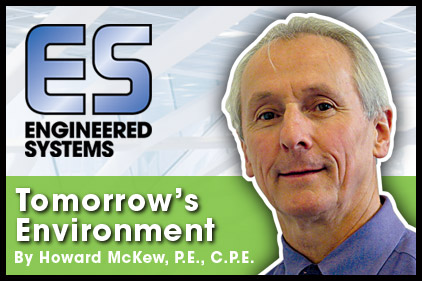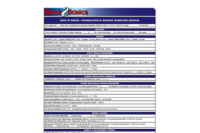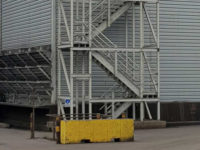To begin, to breakdown the parts associated with any HVAC application, one needs only to open the 2012 ASHRAE Handbook – HVAC Systems and Equipment, Chapter 1, “HVAC System Analysis and Selection” to read and learn about all the considerations that go into designing an HVAC system. No matter what type of application a building owner is investing in, this is the industry standard procedure for selecting the optimum HVAC system.
Now, here comes the rub. For some strange reason, I routinely come across a pharmaceutical engineer, facility person, and/or third-party commissioning professional who proceeds to tell me their project is different from any other type of application. I’m not sure why this thought process seeps into their project attitude, but sometimes I hear this philosophy expressed by someone I consider to be an uninformed individual who probably is not aware of the ASHRAE handbooks and (specifically) Chapter 1 of the 2012 handbook.
Based on my experience, pharmaceutical companies invest far more, if not too much more, in building their projects than most other building applications. They also invest more than most in the O&M of these installations. All of this spending of money would be fine if these companies were really getting their money’s worth for the investment, but they usually don’t get the best value, beginning with a very conservative design-engineering, big-is-better mindset.
I believe the most challenging HVAC systems are the K-12 applications because the system designs are usually, if not always, under-financed. Consequently, these HVAC systems will most likely not be the optimum selection for the application. Depending on the state where the school is built, the contractor bid laws can make the application go from bad to worse through an emphasis on “low bid” that has historically proven to be very adversarial between designer and builder.
Furthermore, when the project is built, the mechanical and electrical systems probably don’t receive third-party commissioning because funds were not set aside to ensure these systems will operate as designed. Project closeout is often a problem, too, because the low-bid trade contractors frequently don’t carry the funds to adequately cover the cost of record documentation and operator training.
Once the school has been turned over to the city or town, there will most likely not be sufficient annual funding of the O&M, and so these HVAC systems soon begin to operate less efficiently. With inadequate maintenance, it is safe to assume the equipment service life will be reduced (ASHRAE also addresses this topic in its hand books, too), and sooner rather than later, the occupants are uncomfortable throughout the building.
It is important to note that K-12 HVAC system controls are usually very complicated in order to accommodate the numerous space conditions, while the majority of pharmaceutical HVAC systems are somewhat simple. When designing a pharmaceutical HVAC system, the major requirements are constant volume supply and exhaust air, space pressure, and lots of air filtration. Both the school and the pharmaceutical application require temperature control and often humidity control, although humidity control will usually get value-engineered out of the school project. K-12 applications will have night setback, temperature override, energy recovery for the high outdoor air ventilation requirements, and a broad range of evening courses that further complicate the energy management initiative. Pharmaceutical HVAC installations are usually operating 24/7 to maintain space pressure requiring high (if not excessive) air changes to also provide the IAQ the basis of design requires.
I’m sure facility personnel serving all other HVAC applications would be surprised to hear of how “special” pharmaceutical programs are, where first cost and operating cost far exceed these other building programs. ES





